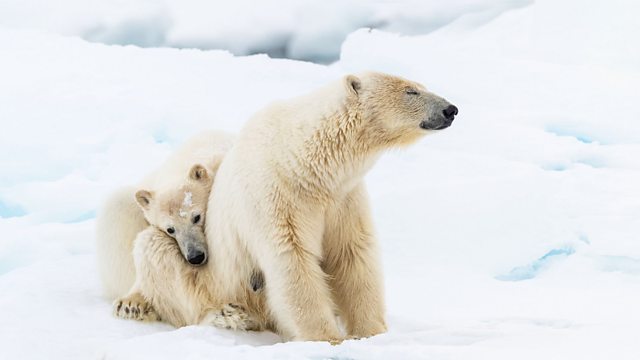Worlds of Wonder
A journey through the world’s coldest realms with the most-loved animals from the series, including emperor penguins and one of the largest packs of wolves ever recorded.
This special episode brings together highlights from the series in a journey from the Arctic to the Antarctic.
We begin on the frozen Arctic Ocean. It’s the end of winter, and as the sun returns, two polar bears meet on the ice. Usually solitary animals, these two young bears seem open to friendship, and together they enjoy several hours playing together - seemingly dancing on ice.
On the coast of Greenland, the Arctic pack ice serves a very important purpose - it is a nursery for baby harp seals. Harp seals spend just 12 days with their mother, drinking her milk and learning their most important life lesson - how to swim.
South of the Arctic Ocean lie vast frozen lands of snow-covered forest and vast, open tundra that circle the globe. Temperatures here can fall to -40C, and conditions are so extreme that many animals have to go to extraordinary lengths to survive. Here we meet a super-pack of wolves - 25 strong, one of the largest ever recorded. They must work together to take down the only substantial prey available to them at this time of year, American bison.
While wolves rely on safety in numbers in these cold and hostile worlds, on the high-altitude cold steppe of Mongolia, a Pallas cat faces life alone. He may have the densest fur of any cat in the world, but he also has the shortest legs, which makes hunting prey in snow challenging.
Frozen worlds are found on every continent on Earth, thanks to our mountains. The higher you go in these high-altitude cold worlds, the more unpredictable they become. Golden eagles live in the mountains all year, surviving on prey both live and dead. In spring, when their neighbouring chamois have calves, it’s an opportune time for the eagles to raise their chicks. They hunt in tandem, one scattering the herd and the other swooping in for the catch. But as the chamois calves grow, conditions become more challenging until, in autumn, one pair of golden eagles decide to take on prey many times larger than themselves.
High altitude allows cold to rule in the most unlikely of places, like Mount Kenya, close to the equator in Africa. Here a mother chameleon must hunker down overnight while temperatures plummet, but by day she must race to feed and breed.
In the far south, we reach the coldest place on Earth: Antarctica, an entire continent covered in ice. Even in summer, its waters are choked with millions of ice floes, the perfect place for Weddell seals to haul out after a night's feed. But they are not alone. With the most sophisticated hunting strategy of any animal, a pod of killer whales has an ingenious way to catch food resting on the ice above.
Our journey finishes in the coldest, darkest winter on Earth, when emperor penguin chicks face one of the toughest upbringings on the planet.
Last on
Music Played
Timings (where shown) are from the start of the programme in hours and minutes
-
![]() 00:01
00:01Al Denson
Be
-
![]() 00:05
00:05Makana
Deep In An Ancient Hawaiian Forest
-
![]() 00:15
00:15John "Rabbit" Bundrick
Feather
-
![]() 00:22
00:22Oscar Salguero
City Nights
-
![]() 00:57
00:57Deil Eight
Deep Space
Credits
| Role | Contributor |
|---|---|
| Narrator | David Attenborough |
| Series Producer | Elizabeth White |
| Executive Producer | Mark Brownlow |
| Producer | Sally Cryer |
Broadcasts
- Mon 2 Jan 2023 20:00
- Sun 8 Jan 2023 15:00
- Sun 7 May 2023 16:15±«Óãtv One except Scotland, Scotland HD, Wales & Wales HD
- Christmas Eve 2023 13:50±«Óãtv One except Wales & Wales HD
Featured in...
![]()
Escape to Nature
Cast off the stress and relax with stunning images from the natural world.
![]()
Our World at Winter
As the seasons change, nature is transformed.
Download a FREE Open University poster and explore how animals adapt to life in the coldest environments
Visit the Open University website to download your digital poster.



